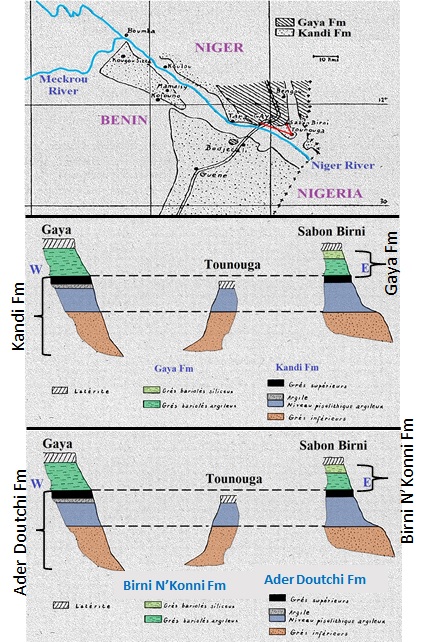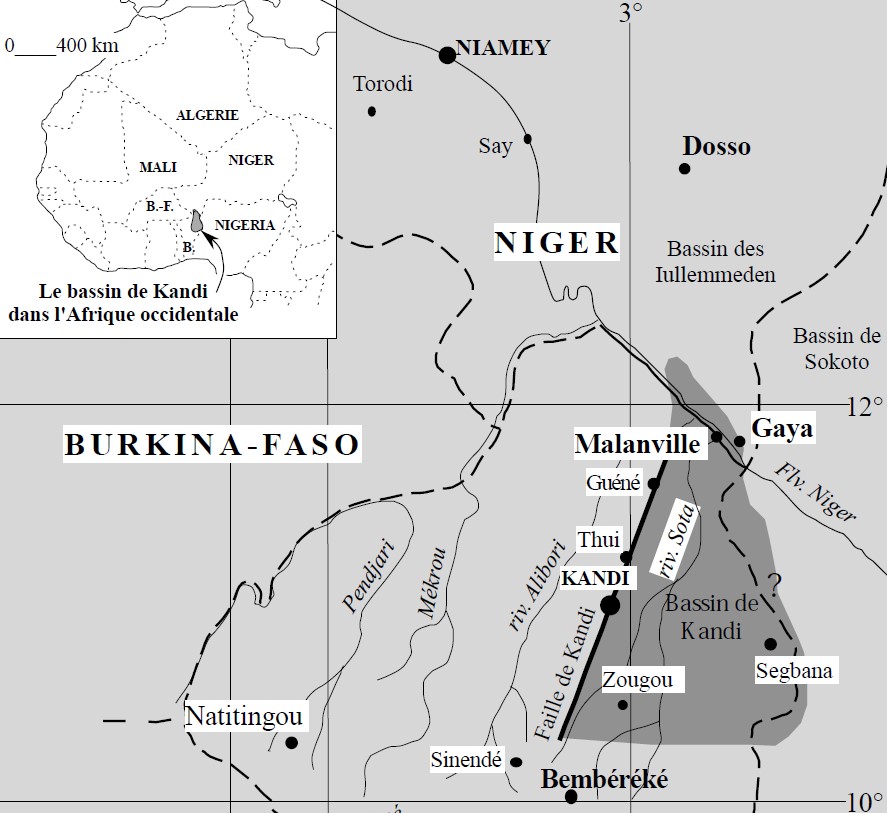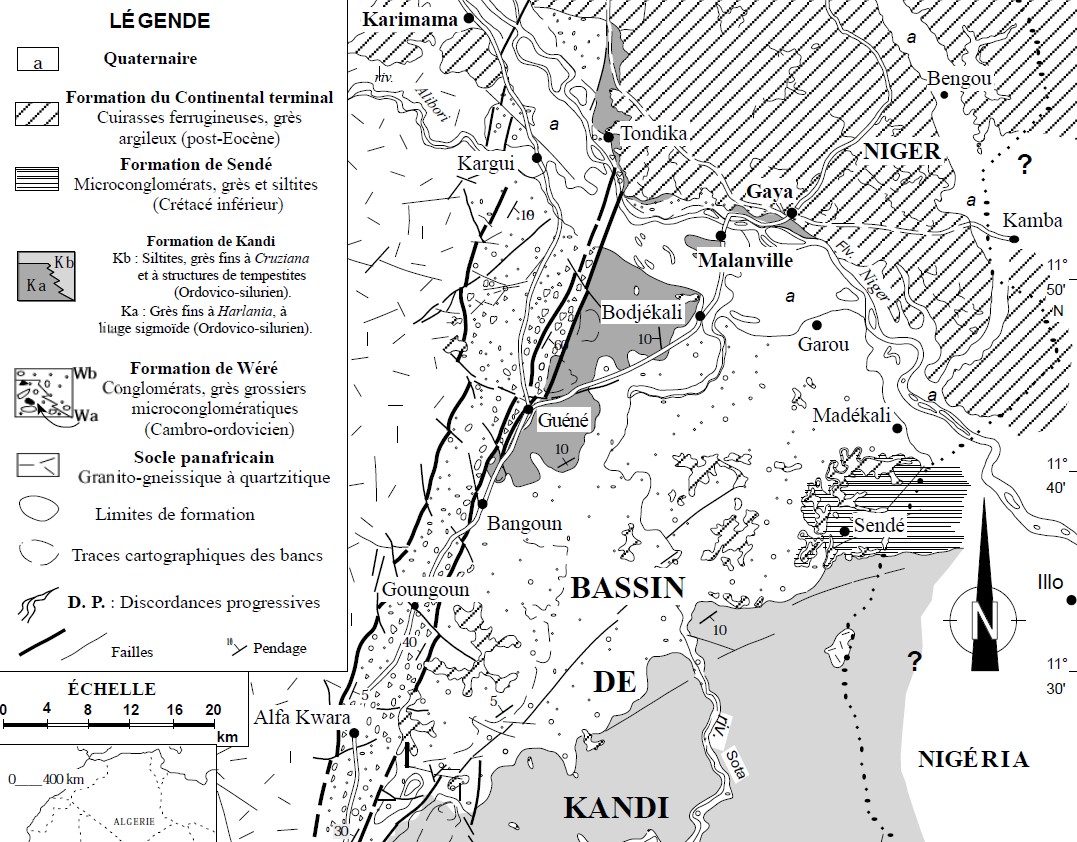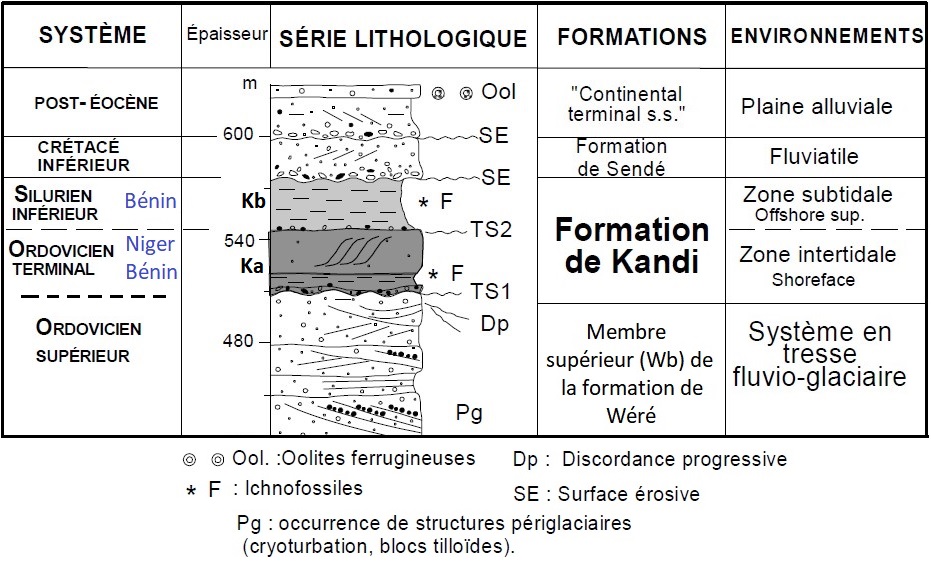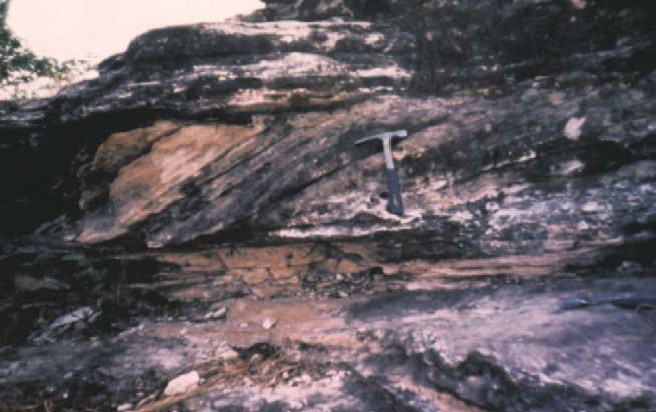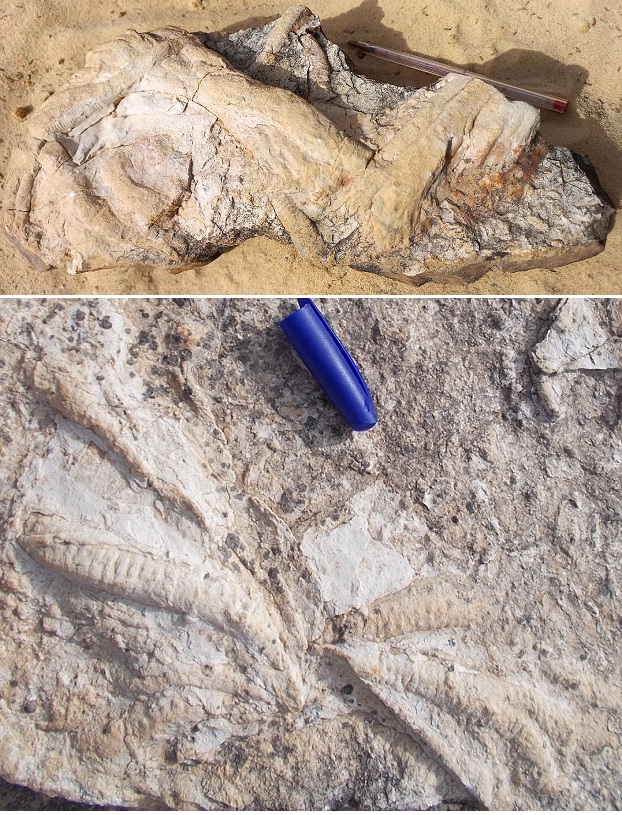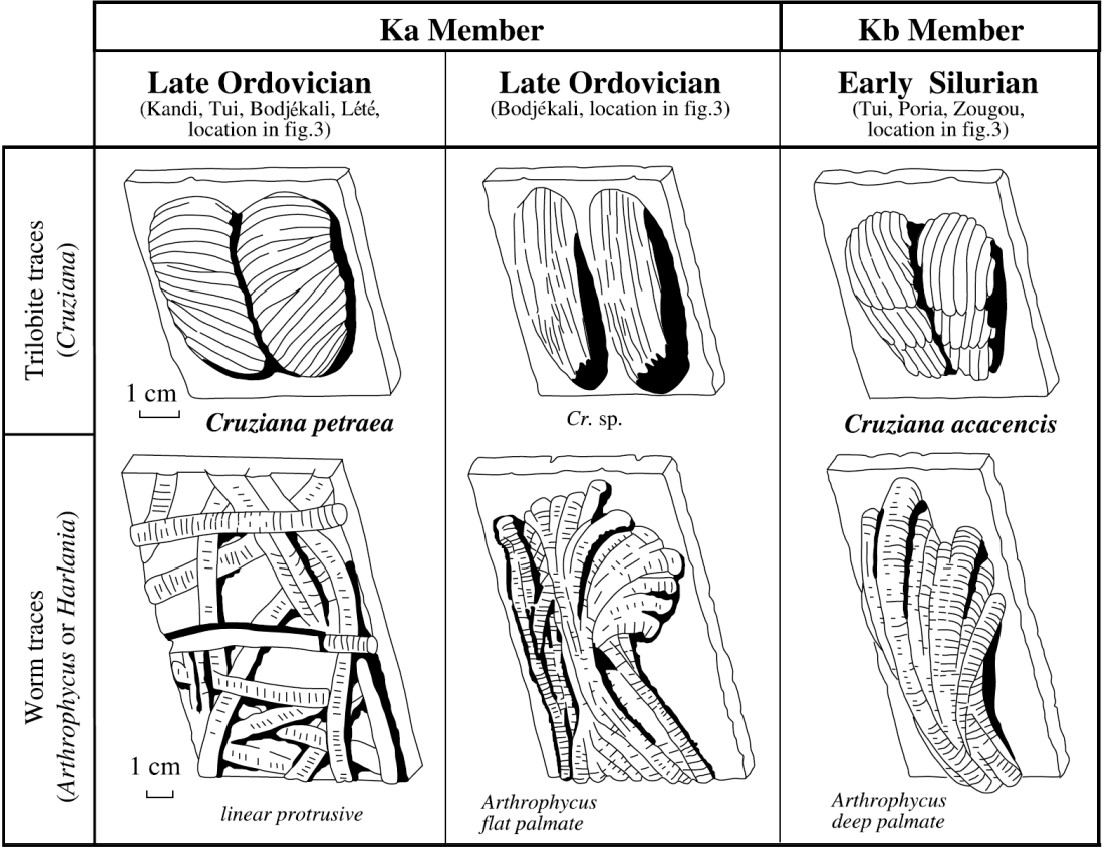Kandi Fm
Type Locality and Naming
Type Section in Poria (Benin) (Fig. 1. Fig. 2); Niger’s Reference Section is in Tondika (Fig. 3). Pougnet (1949), for the name of the Sub-Basin of Kandi of Benin. Part of Kandi Gr of Benin (not defined in this lexicon since the Kandi Fm is the only unit of this group present in Niger).
References: Faure et al., 1956; Greigert, 1966; Konaté, 1996; Konaté et al., 2003, 2006; Heckmann, 2019.
Synonym: Grès de Kandi. Equivalent(s): The Ka Member could be equivalent to the Terminal Complex of the Tim Mersoï Sub-Basin (top of In-Azaous Gr).
[Figure 1. Top) Simple geological map of the Gaya area showing the rivers (blue); Pougnet (1949)’s version of the two formations of Gaya and Kandi [see “Remarks]; and the area of the cross-section (red line). Center) Section defined by the red line on the map and interpreted according to Pougnet (1949). Bottom) The same section is interpreted as per this Lexicon.]
[Figure 2. Location of the Kandi Sub-Basin (Benin & Niger) (Konaté, 1996). In Niger, it is represented only by the small area north of the Niger River.]
[Figure 3. The outcrops of the Kandi Formation in Benin & Niger (Konaté, 1996). In Niger, only the Ka Member outcrops along the Niger River.]
Lithology and Thickness
Two Members (Ka & Kb) (Fig. 4) are distinguished from ichnofossil associations (Fig. 6) and sedimentary structures within the Kandi Formation in Benin. In Niger, only the oldest Member (Ka) is present. This Member consists of medium-to fine-grained sandstone deposits displaying sigmoidal bedding and herringbone cross-bedding (Fig. 5). The lowermost deposits of the Ka Member are formed by alternating beds of fine-grained sandstones and siltstones with slightly erosional furrows (Konaté, 2003). Thickness: 140 to 240 m in Nigeria; ~70 m in Benin; The Ka Member reaches a maximum thickness of 45 m in Benin and is reduced to about 25 m in Niger.
Figure 4. Partial lithostratigraphic column of northeastern Benin (Kandi Basin) showing the Ka Member of the Kandi Fm present in Niger in the Gaya area (modified from Konaté et al. (2006).
Figure 5. Fine sandstones with sigmoidal bedding and erosional hummocky cross-stratification; tidal deposits of the Kandi Fm, Ka Member, Bodjékali sector, Benin (Source: Konaté et al., 2003).
Relationships and Distribution
Lower contact
Precambrian is below
Upper contact
Overlain Unconformably in Niger by the Continental Terminal deposits of the Ader Doutchi Fm (Ct1).
Regional extent
As per Fig. 1. 2 and 3, the Kandi Formation outcrops in Niger near the towns of Gaya and Tondika.
GeoJSON
Fossils
Ichnofossil: Several traces of Cruziana petraea (trilobites burrows) and Arthrophycus or Harlania (worm) have been reported in the deposits of the Ka Member (Figs. 6 and 7).
Fig 6. Traces/burrows of Harlania Bodjékali specimens from the Kandi Fm (courtesy of Dr. Moussa Konaté), plus higher-resolution images.
Figure 7. Trace fossils of the Kandi Fm and its chronostratigraphic classification (Heckmann, 2019).
Age
Depositional setting
The lower Member (Ka) goes from offshore to the foreshore, while the upper Member (Kb) [not present in Niger] is in an offshore environment.
Additional Information
